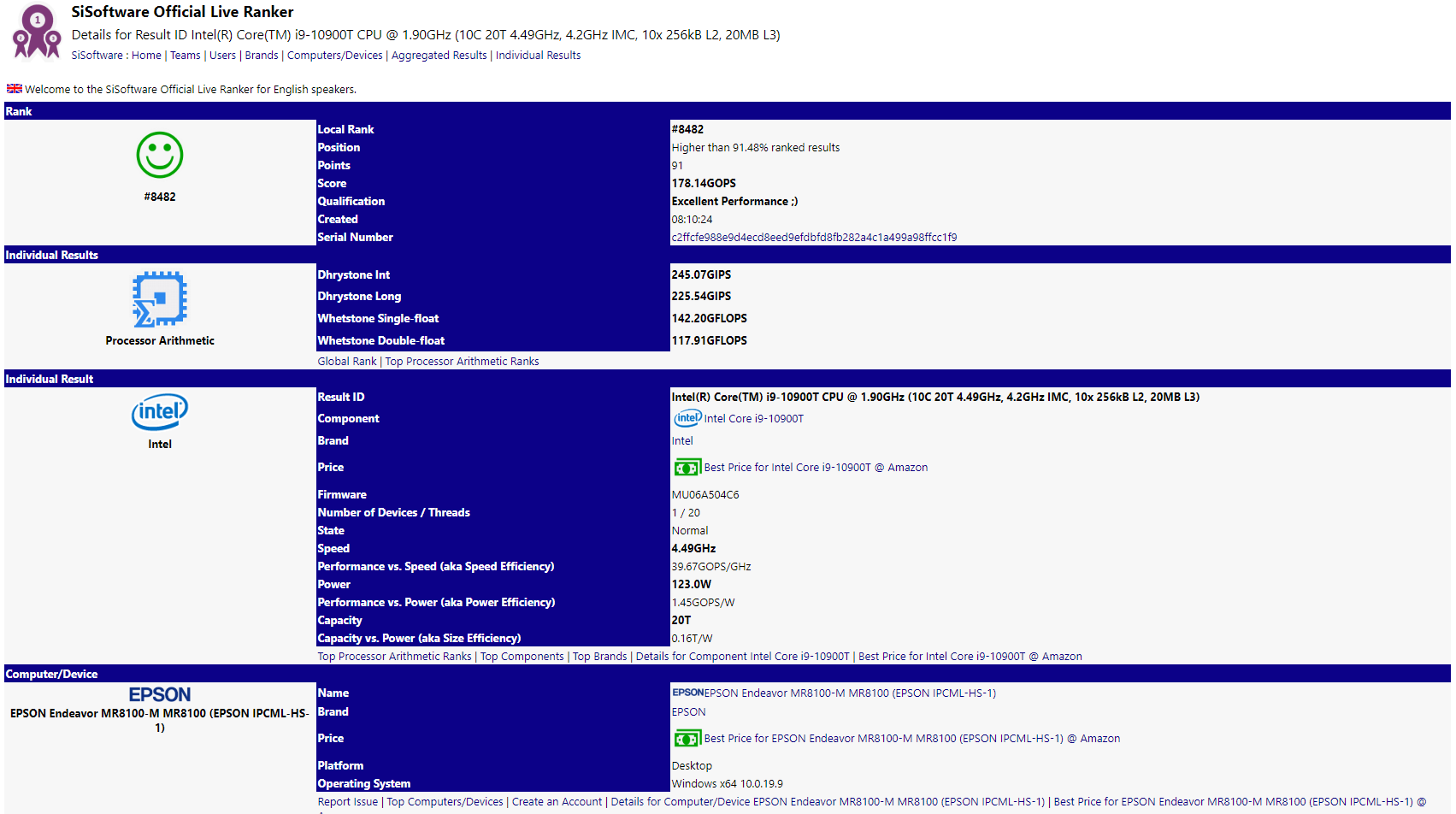Intel 35W Comet Lake CPU Spotted With Up To 123W Peak Power Draw
Details about Intel's upcoming Comet Lake processors began to trickle out a few months ago, but now the trickle has turned into a flood as Intel's 10th-gen chips come closer to market.
The latest discovery from @TUM_APISAK finds the Intel Core i9-10900T in the spotlight via a SiSoftware test entry. The deca-core chip is one of Intel's upcoming 10th Generation Comet Lake desktop offerings that require a motherboard upgrade.
Like all T-series chips, Intel designed the Core i9-10900T to be the low-power optimized version of its regular models, in this case, the flagship Core i9-10900K. As such, although the "T" model comes equipped with ten cores, 20 threads and 20MB of L3 cache, it retains the same essential specifications but runs at a slower clock speed to meet a lower TDP (thermal design power) rating for power-constrained systems, like small form factor PC builds.
The SiSoftware submission detects the Core i9-10900T with a 1.9 GHz base clock, which coincides with previous listings, and a 4.49 GHz boost clock. The most eye-opening detail is that the processor allegedly drew up to 123W during the benchmark. That's surprising because the chip has to adhere to a 35W TDP to carry the "T" suffix.
It's important to bear in mind that Intel lists the PL1 (power level 1) rating, which it measures when the chip is operating at its base clock, for its specifications. The PL2 (power level 2) rating is the processor's maximum power consumption when it engages the Turbo Boost frequency.

Assuming SiSoftware's report is accurate, that means the 123W reading should represent the Core i9-10900T's PL2 threshold. The figure doesn't come as a complete shock because we have spotted the Core i7-10700KF pulling 250W in the same benchmark. However, there's a chance that SiSoftware isn't reporting the Core i9-10900T's power consumption correctly, which sometimes happens with unreleased hardware. This chip could also be an engineering sample, which means the results could be subject to change after further tuning.
The Core i9-10900T reportedly put up a score of 178.14 GOPS. Just so you get a general idea of the unreleased ten-core chip's performance, the best Core i5-9600K on SiSoftware has a score of 196.81 GOPS. So, performance-wise, the Core i9-10900T is up to 10% slower than the six-core Core i5-9600K chip.
Get Tom's Hardware's best news and in-depth reviews, straight to your inbox.
Intel's Comet Lake desktop processors are expected to arrive next month, but a recent report suggests that the new 14nm chips might not land until June due to the ongoing coronavirus (COVID-19) pandemic.

Zhiye Liu is a news editor, memory reviewer, and SSD tester at Tom’s Hardware. Although he loves everything that’s hardware, he has a soft spot for CPUs, GPUs, and RAM.